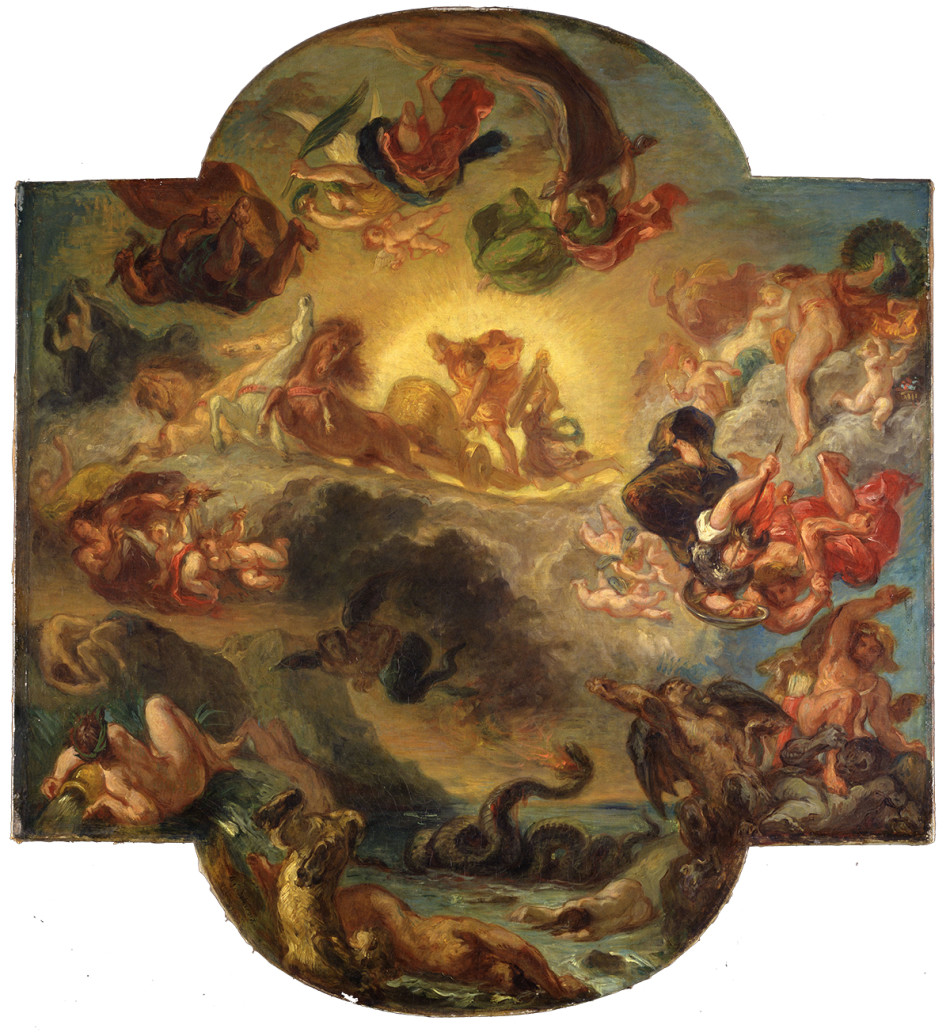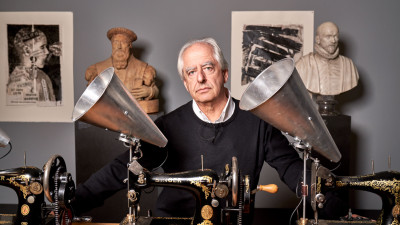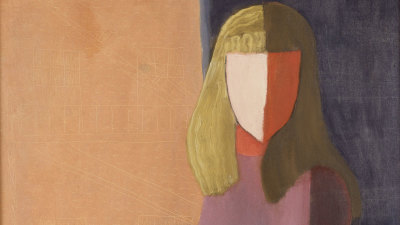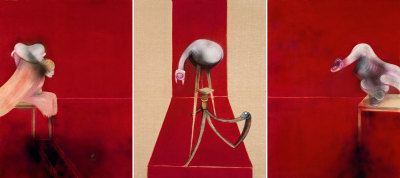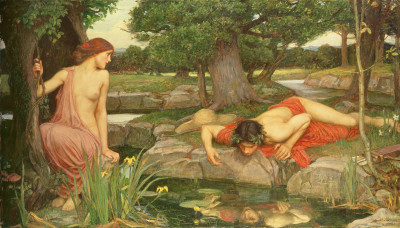Peter Paul Rubens: a beginner’s guide
Peter Paul Rubens: a beginner’s guide
By Tom Jeffreys
Published 18 December 2014
The influence of the Flemish Baroque master can be seen across art history, from the portraits of Van Dyck to the prints of Picasso. Here’s a quick intro to “the prince of painters”.
-
Charles I: King and Collector is at the RA from 27 January to 15 April 2018.
Please note: This article was originally published in 2014, in connection with our Rubens and His Legacy: Van Dyck to Cézanne exhibition.
The name Rubens conjures vivid images of fleshy nude women, but his paintings embraced a broad array of subjects. Rubens has been called “the prince of painters” and his influence can be seen from the portraits of Van Dyck to the prints of Picasso. Here are six surprising facts that show there’s more to Rubens than you might think.
-
There was little Rubens couldn’t paint
One of the most striking things about Rubens is the sheer breadth of his subject matter. This is a central focus of the exhibition, which includes work ranging from violent dramatisations of hunting or rape to religious and mythological scenes, carefully constructed landscapes and charismatic portraits. With his bold, confident brushwork, Rubens mastered each of these genres and made his mark on their subsequent evolutions. Especially memorable is Tiger, Lion and Leopard Hunt (1616), which captures the energy and fear of both human and animal subjects. Over 200 years later, the influence it had on Edwin Landseer’s The Hunting of Chevy Chase (1825-6) is clear.
-

Peter Paul Rubens, Tiger, Lion and Leopard Hunt, c.1616.

Edwin Landseer, The Hunting of Chevy Chase, 1825-26.
-
Rubens is a painter’s painter
This is the first exhibition to focus on Rubens’s impact on the course of art history. The exhibition’s co-curator, Nico Van Hout, explains that without Rubens, there would be “no Rococo, no Romanticism, no Orientalism. Perhaps even no Impressionism.” Artists such as Delacroix, Van Dyck, Rembrandt and Picasso have acknowledged their debt to Rubens. More subtle was his influence on the likes of Constable and Gainsborough. At the same time as ‘Rubens and His Legacy’, Jenny Saville RA curated La Peregrina, a response to the exhibition that pays tribute to Rubens’s influence right up until today. Alongside new work by Saville herself are paintings by Pablo Picasso, Francis Bacon, Sarah Lucas, Lucian Freud and more.
-

Francis Bacon, Sleeping Figure, 1959.
Oil on canvas. 119.5 x 152.5 cm. Private Collection © The Estate of Francis Bacon. All rights reserved. DACS 2015 Photo: Prudence Cuming Associates Ltd.
-
Rubens was a master colourist
“This is a show about colour,” says Van Hout. Perhaps more than anything, it is Rubens’ use of colour that inspired subsequent generations of artists. His paintings, he believes, taught them what they could not learn at art school: the ability to bring a subject alive. Rubens’ approach was in stark contrast to the classical rationality of the Renaissance. From rich scarlet robes and a tiger’s glowing pelt (Tiger, Lion and Leopard Hunt, 1616) to the deep russet earth of an idealised Belgian countryside (Evening Landscape with Timber Wagon, 1630-40): every work by Rubens is characterised by an intensity of tone and brushstroke.
-

Peter Paul Rubens, Evening Landscape with Timber Wagon, 1630-40.
Oil on panel. 49.5 x 54.7 cm. Museum Boijmans van Beuningen, Rotterdam, inv. 2514. Photo: Museum Boijmans Van Beuningen, Rotterdam/Photographer: Studio Tromp, Rotterdam. Exhibition organised by the Royal Museum of Fine Arts, Antwerp, Royal Academy of Arts, London, and BOZAR (Centre for Fine Arts), Brussels.
-
Rubens was knighted – twice
As well as producing some of history’s most celebrated paintings, Rubens was also an intellectual, a collector and a highly effective diplomat. He combined aristocratic connections and personal charm with talent as a painter to carry out delicate diplomatic missions for European royalty: gathering sensitive information, delivering messages and negotiating peace deals between nations. He was first knighted by Philip IV of Spain in 1624, and then, six years later, by Charles I of England. His iconic ceiling for Banqueting House in Whitehall is said to have brought about the peace between England and Spain. Waldemar Januszczak has called it a “truly remarkable piece of cultural diplomacy.” Preparatory sketches for the work is included in the RA exhibition.
-
Video
Professor Mary Beard introduces 'Rubens and His Legacy: Van Dyck to Cézanne'
Recorded at Banqueting House, Whitehall.
-
It’s love or hate
With Rubens, there is no middle ground. Perhaps it was the success he enjoyed during his lifetime that led to the subsequent reaction against Rubens. In the 19th century, as the idea emerged that artists should suffer for their art, the successful bon viveur Rubens became a target of scorn from the likes of Lord Byron and Jean-Auguste-Dominique Ingres. Van Gogh was highly critical of Rubens in his letters, but was in fact himself influenced by Rubens – especially in terms of his handling of paint. Other seemingly unlikely successors to Rubens include expressionist Oskar Kokoschka and symbolist Gustav Klimt (both Klimt and Rubens sketched depictions of Roman martyr St Cecilia, for example.)
-

Eugène Delacroix, The Triumph of Apollo (Apollo Vanquishing the Serpent Python), c. 1853.
Oil on canvas. 110 x 99.5 cm. Fondation E.G. Bührle Collection, Zurich. Photo: Foundation E.G. Bührle Collection (J.-P. Kuhn, SIAR). Exhibition organised by the Royal Museum of Fine Arts, Antwerp, Royal Academy of Arts, London, and BOZAR (Centre for Fine Arts), Brussels.
-
Key theme: sex
Of course, no discussion of Rubens should overlook his nudes entirely, and his virtuoso handling of flesh is in evidence throughout the exhibition. In Pan and Syrinx (1617), for example, Pan is a study in both power and desire – his skin tanned, his muscular body hunched, his gaze fixed on his target. Syrinx, by contrast, is pale, blonde and vulnerable – both to Pan’s advances and the gaze of the viewer. As Mary Beard says of the exhibition: “It’s going to make us look again at all those edgy images of sex, lust and rape, and what they mean. It will be hard for anyone to go away without wondering about the sensuous and erotic world of the past – and about our own.”
-

Peter Paul Rubens and Jan Brueghel the Elder, Pan and Syrinx, c.1617.
Oil on panel. 40 x 61 cm. Museumslandschaft Hessen Kassel, inv. GK 1229. Photo: Museumslandschaft Hessen Kassel, Gemäldegalerie Alte Meister/Ute Brunzel. Exhibition organised by the Royal Museum of Fine Arts, Antwerp, Royal Academy of Arts, London, and BOZAR (Centre for Fine Arts), Brussels.
-
Rubens and His Legacy: Van Dyck to Cézanne was in the Main Galleries from 24 January — 10 April 2015.
Tom Jeffreys (@tomjeffreys) is a writer, editor and curator.
-
-

Charles I: King and Collector
Exhibition on until 15 April 2018
King Charles I amassed one of the most extraordinary art collections of his age, acquiring works by some of the finest artists of the past – Titian, Mantegna, Holbein, Dürer – and commissioning leading contemporary artists such as Van Dyck and Rubens. For the first time since the 17th century, this landmark exhibition brings together the astounding treasures that changed the taste of the nation.
-




